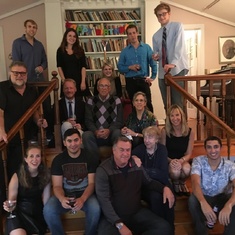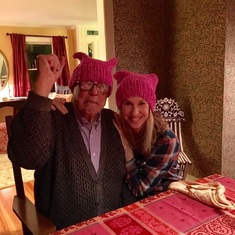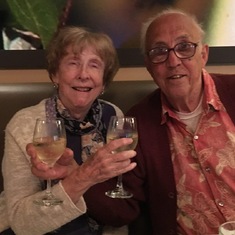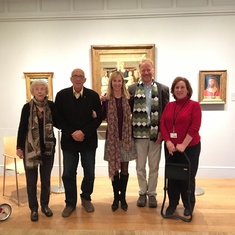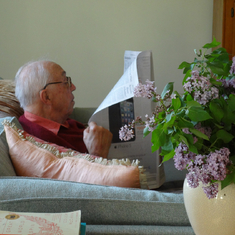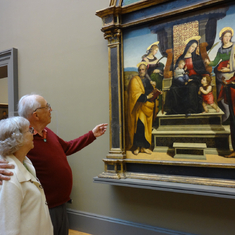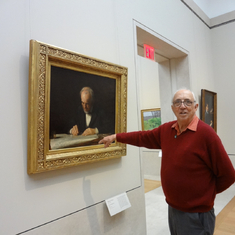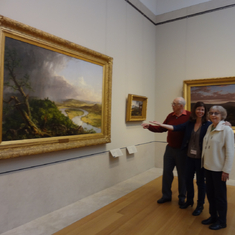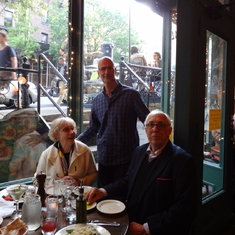by Mark Haxthausen
Samuel Youngs Edgerton, Jr., 94, Amos Lawrence Professor, Emeritus, at Williams College, passed away on April 25 at his home in Williamstown, Massachusetts.
The appellation “Renaissance man” is now a cliché yet is hard to avoid in Sam Edgerton’s case. As a distinguished historian of the art of the Italian Renaissance his polymathic erudition was reflective of the rich intellectual culture of that epoch’s painters, architects, and thinkers. His art-historical publications dealt with—a partial list—astronomy, cartography and geography, color theory, mathematics, optics, theology, communal jurisprudence, and the fertile interrelations between art and science.
Sam took a long, indirect route to his chosen profession. Born in Cleveland, Ohio on September 30, 1926, he spent his early boyhood in Shaker Heights and moved with his family to Wynwood, Pennsylvania for his high school years. After earning a bachelor’s degree from the University of Pennsylvania in 1950, he spent a year as a sales representative for a meatpacking company before being hired as an art teacher and wrestling coach at a private school in Pennsburg, PA—surely a rare combination and an early predictor of his versatility as a scholar. While teaching he pursued an M.F.A. degree in painting from Penn, awarded in 1956. In 1957-58 he spent a year in Lingen, Germany, teaching English on a Fulbright exchange program.
After returning to the United States Sam enrolled again at the University of Pennsylvania, now for graduate work in art history, earning his M.A. degree in 1960. His first article appeared the following year, on a topic off the well-trodden path of art-history-as-usual: “Heat and Style: Early Housewarming in Philadelphia,” a study of the technologies and aesthetics of stoves in the eighteenth century. Sam completed his Ph.D. in 1965 at the age of thirty-nine, one year after his appointment to the art history faculty of Boston University. In 1969, only four years later, he was promoted to full professor.
In 1980, after sixteen years at Boston University, including three as department chair, Sam was appointed director of the Graduate Program in the History of Art, a joint program of Williams College and the Clark Art Institute in Williamstown. Upon his arrival, he worked to integrate the program more closely with the college, strengthening its curriculum, and instituting an annual January study trip to Italy on which he guided the students with his infectious enthusiasm. One alumna spoke for many when she described him as “an important, loving, kind mentor, and such a witty and memorable character—full of good humor, bursting with fascinating ideas, always exuberant in his welcome.”
Summing up his scholarship, Sam wrote that “the single thread that unites the seemingly diverse subjects of my books is the desire to reveal how the history of art interacted with the ideologies and social institutions of these diverse cultures. There can never be, and probably never was, a neutral, completely apolitical art, created solely for aesthetic enjoyment without any other social motivation. A work of art is a tool for performing some distinct social function.”
His first book,
The Renaissance Rediscovery of Linear Perspective (1975), is an essential work on its subject, “an important contribution to the literature of both art history and the history of science,” in the words of one reviewer. Probably none of Sam’s books better exemplifies his interest in the social agency of images than his
Pictures and Punishment: Art and Criminal Prosecution during the Florentine Renaissance (1985). Here he went outside the aesthetic canon of Renaissance artworks to explore the “symbiotic cooperation” between art, politics, and law in Italy from the thirteenth to the seventeenth centuries. He argued that over time the revolutionary art of Renaissance Florence, through its gruesome, realistic depiction of torture and executions, had a mitigating effect on a brutal criminal justice system that was still moored in the Middle Ages. In 1991
Giotto’s Geometry: Art and Science on the Eve of the Scientific Revolution (1991) appeared, and was awarded the Helen and Howard R. Marraro Prize by the American Historical Association for the best book by an American in the field of Italian history. Along with his earlier book on perspective it has been translated into German, and, in 2018, into Chinese. Of his last book,
The Mirror, the Window, and the Telescope: How Renaissance Linear Perspective Changed our Vision of the Universe (2009), a reviewer wrote in the
British Journal of the History of Science: “Wandering scholars rarely come back to the terrain of their early research; Edgerton’s return to Renaissance perspective, with all his added insight, is a rare treat.”
In his mid-sixties, as he was about to step down after thirteen years as director of the Graduate Program, Sam discovered a new horizon for his teaching and scholarship. As he liked to relate it, on a visit to Mexico to visit his daughter Perky’s family, who were on sabbatical in Oaxaca, he experienced a road-to-Damascus epiphany: he joked that he had heard the voice of Montezuma: “Sam, why are you ignoring me?” But this moment had a more profound significance. In a statement on his art-historical method Sam revealed the real reason behind his response to this richly layered culture: it was “this stubborn faith in the continuity of ancient customs that has so fascinated me about the past and present Amerindians of Mesoamerica
. I perceive in these people the same mental-set that characterized Europe between the fall of the Roman Empire and the rise of the Renaissance.” Witnessing the celebrations of Holy Week, he wrote, was “like taking a trip in an H.G. Wells time-machine to watch a passion play in thirteenth-century Christian Europe.” With a newfound passion he enthusiastically steeped himself in an intensive study of Mayan culture and in the art and architecture of colonial Mexico. He now taught courses on Mayan art, producing for his students a 150-page textbook on the subject and publishing a series of articles. His interest in the syncretic connection between Meso-American religion and Christianity in the encounter between missionaries and native populations culminated in his book,
Theaters of Conversion: Religious Architecture and Indian Artisans in Colonial Mexico, published in 2001.
During his career Sam won many grants and fellowships in support of his research. Among these were residencies at Harvard’s Center for Italian Renaissance Studies at the Villa I Tatti in Florence and two as a member of the Institute for Advanced Study in Princeton. He was also awarded fellowships by the John Simon Guggenheim Foundation, the National Endowment for the Humanities, and the American Council of Learned Societies. He accepted invitations as a visiting scholar from Trinity College at Oxford University and Humboldt University in Berlin.
A few years after the move to Williamstown Sam and his wife Dorothy (“Dottie”) acquired a former poultry farm on the edge of town, which they christened “Villa Uova,” the name emblazoned on a sign readily visible from the highway. On this idyllic spot, Sam became a dedicated and successful gentleman farmer.
It is representative of Sam’s humanity that he left his mark not only as a teacher and scholar. He was a member of the NAACP and a civil rights activist. In 1963 he played a leading role in desegregating the public schools of Ardmore, Pennsylvania, just outside Philadelphia. In that same year, he took part in civil rights marches in Boston and Philadelphia and joined Martin Luther King's March on Washington. On its fiftieth anniversary he donated his unique collection of artifacts from that march to the Smithsonian Museum of African American Art and Culture, which had just opened on the National Mall in Washington.
Sam Edgerton
is survived by his loving wife, Dorothy, his children, Perky and husband Brian Meunier, Sam III, and Mary and husband Christoph Winter, his grandchildren, Marina, Lela, Peter, Kevin, Chloe, Zach, and Phoebe, and his great grandchildren, Xavi, Nico and Gabriel.Samuel Edgerton will be buried next to his son Peter Edgerton in the Williams College Cemetery. A memorial service TBA.
,
